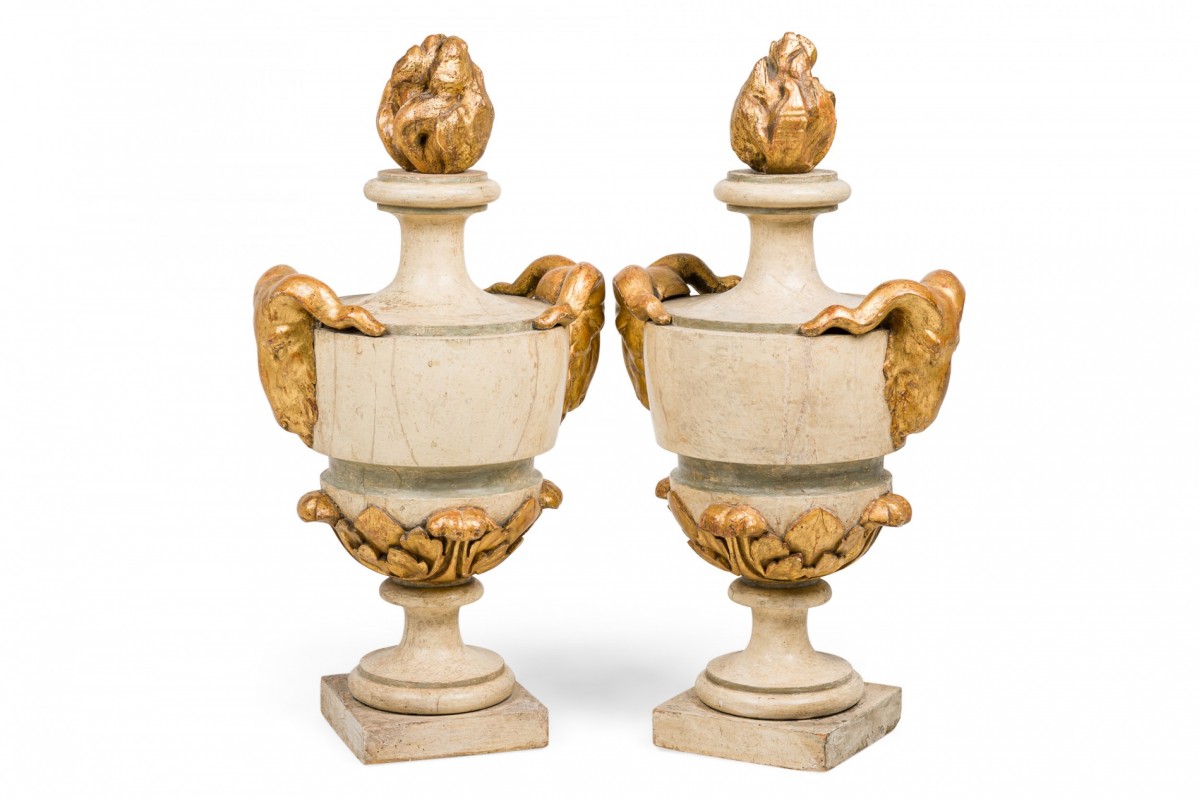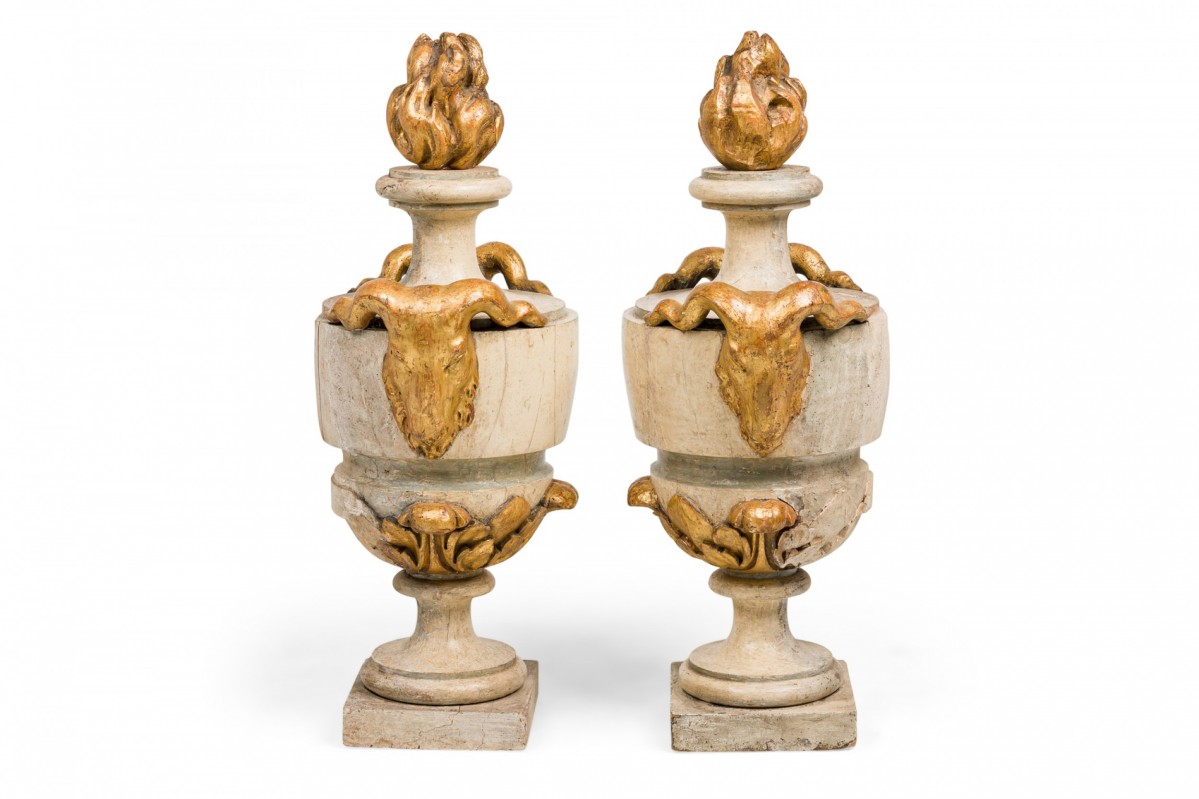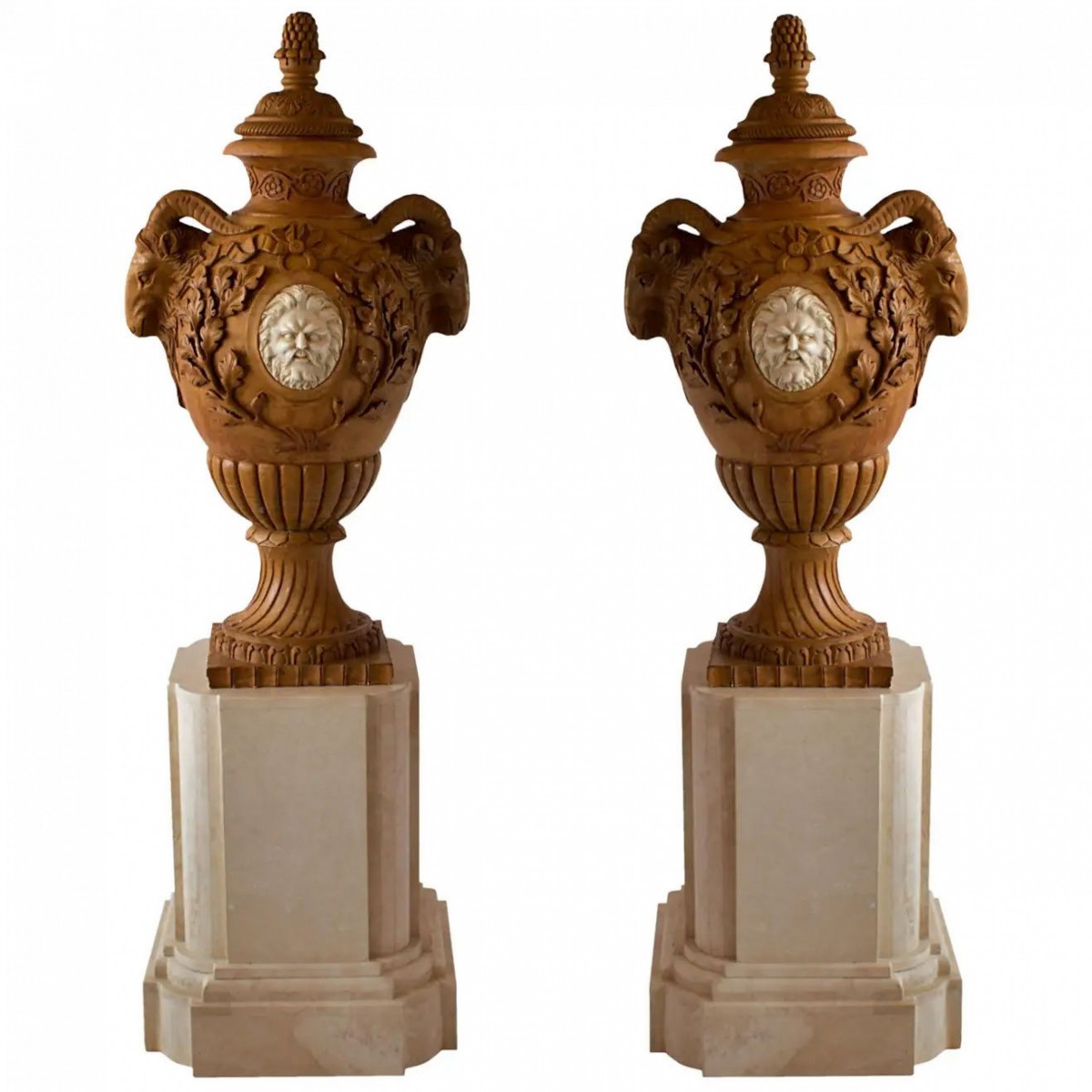X
{{ modalTitle }}
PLEASE FILL IN THE REQUIRED FIELDS.X
X
{{ modalTitle }}
Choose one of the options below.X
ITEM SUCCESSFULLY
ADDED TO PROJECT
Pair of Italian Neo-classic Parcel Gilt Painted Wood Flame Finial Decorative Urns
 Italian
Italian Neo-classic
Neo-classic Accessories/Décor/Bric-a-Brac
Accessories/Décor/Bric-a-Brac Vases/Urns
Vases/Urns
Newel Gallery
306 East 61st Street, 3rd Floor
NY - 10065
 (212) 758-1970
(212) 758-1970
Pair of Italian Neo-classic Parcel Gilt Painted Wood Flame Finial Decorative Urns

Newel Gallery
306 East 61st Street, 3rd Floor
NY - 10065
 (212) 758-1970
(212) 758-1970
 Accessories/Décor/Bric-a-Brac
Accessories/Décor/Bric-a-Brac Vases/Urns
Vases/UrnsNeo-classic
Neo-classic refers to the second revival of classic design for interior decoration in the 18th century. This style was inspired by excavations of Pompeii and Herculaneum that begun in 1738. Common motifs include dolphins, lyres, and urns.
Finial
An ornamental, terminating piece that extends vertically from the apex of a design. In architecture, they are found at the tips of gables or spires, and in furniture, as top ornaments on cabinet corners, posts, or supports. Finial also refers to the decorative metal piece used to affix lampshades to table and floor lamps. They often take the shape of a ball, flame, flower, acorn, pineapple, or vase.
Baluster
A vertical architectural support used in stairways and parapets, most commonly to serve as supports for handrails. Balusters first became common during the Renaissance period and have been used widely in architecture since. Balusters are typically wood or stone and have a decorative shape (wooden examples are commonly lathe-turned).
Neo-classic
Neo-classic refers to the second revival of classic design for interior decoration in the 18th century. This style was inspired by excavations of Pompeii and Herculaneum that begun in 1738. Common motifs include dolphins, lyres, and urns.
Finial
An ornamental, terminating piece that extends vertically from the apex of a design. In architecture, they are found at the tips of gables or spires, and in furniture, as top ornaments on cabinet corners, posts, or supports. Finial also refers to the decorative metal piece used to affix lampshades to table and floor lamps. They often take the shape of a ball, flame, flower, acorn, pineapple, or vase.
Baluster
A vertical architectural support used in stairways and parapets, most commonly to serve as supports for handrails. Balusters first became common during the Renaissance period and have been used widely in architecture since. Balusters are typically wood or stone and have a decorative shape (wooden examples are commonly lathe-turned).
Neo-classic
Neo-classic refers to the second revival of classic design for interior decoration in the 18th century. This style was inspired by excavations of Pompeii and Herculaneum that begun in 1738. Common motifs include dolphins, lyres, and urns.
Finial
An ornamental, terminating piece that extends vertically from the apex of a design. In architecture, they are found at the tips of gables or spires, and in furniture, as top ornaments on cabinet corners, posts, or supports. Finial also refers to the decorative metal piece used to affix lampshades to table and floor lamps. They often take the shape of a ball, flame, flower, acorn, pineapple, or vase.
Baluster
A vertical architectural support used in stairways and parapets, most commonly to serve as supports for handrails. Balusters first became common during the Renaissance period and have been used widely in architecture since. Balusters are typically wood or stone and have a decorative shape (wooden examples are commonly lathe-turned).


















